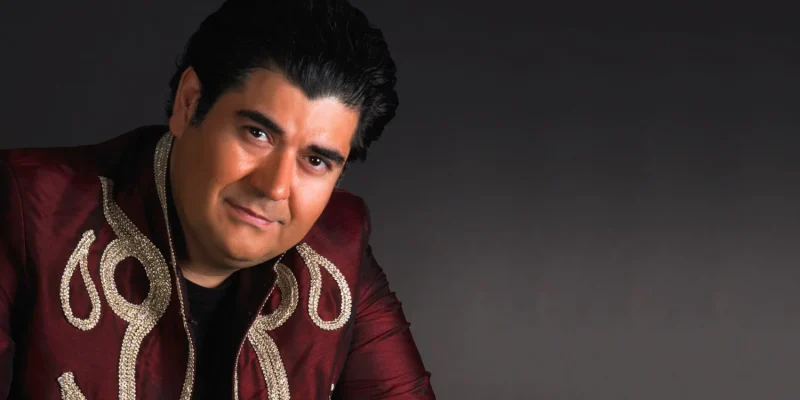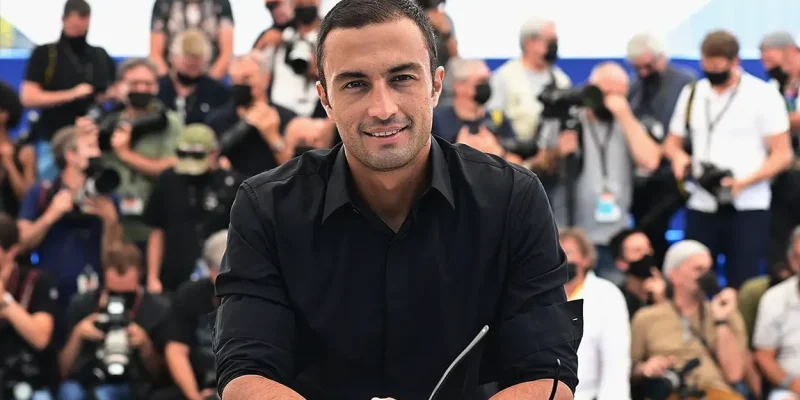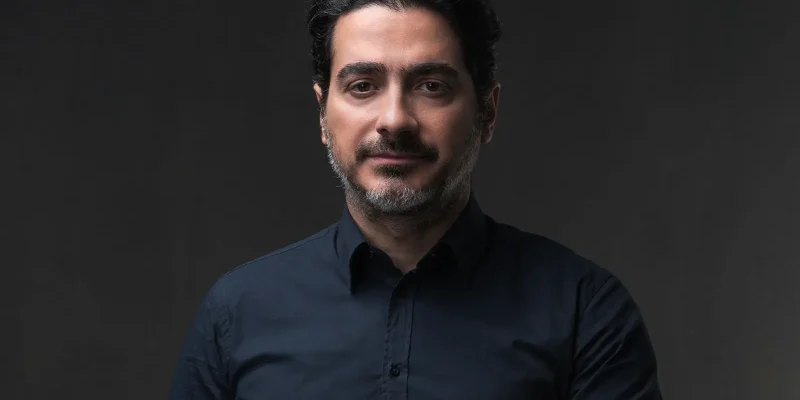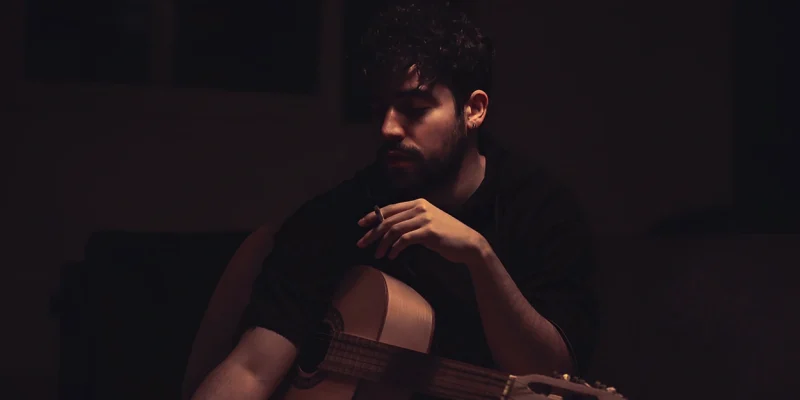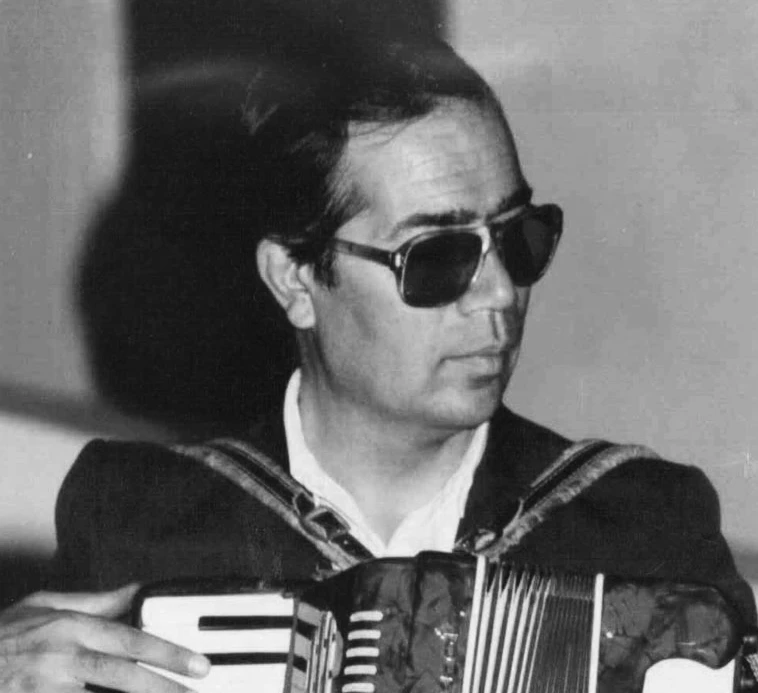
The late Master Omid Ali Nahvi was a tall, broad-shouldered, and handsome blind musician whose neat and artistic appearance—especially his tinted glasses—rarely led anyone to suspect his blindness. Although no longer with us, his legacy lives on through his remarkable works.
He was born in 1949 (1328 SH) in Razan, Hamedan. At the age of five, he lost his eyesight due to measles. At six, upon his father’s recommendation, he entered the Rudaki Boarding Music School, affiliated with the Higher Conservatory of Music and managed by Hossein-Ali Vazirtabar.
From 1955 to 1962 (1334–1341 SH), he was mentored by the great Master Javad Maroufi, who supported Nahavi throughout his life.
Early Life and Education
Omid Ali Nahvi was born in 1949 (1328 SH) in Razan, Hamedan. At the age of five, he lost his eyesight due to measles. Upon his father’s recommendation, he enrolled at the Rudaki Boarding Music School, affiliated with the Higher Conservatory of Music, under the management of Hossein-Ali Vazirtabar. From 1955 to 1962, he studied under the renowned Master Javad Maroufi, who remained a lifelong mentor.
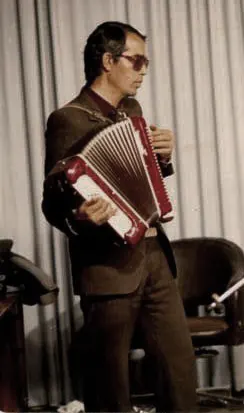
Musical Training and Influences
During his education, Nahvi performed in the Rudaki Conservatory Orchestra alongside figures such as Mahmoud Bolouri, Shirin Abadi, and Yaghoub Sahaf. Between 1958 and 1960, he studied mandolin under Master Hooshang Zarif and also trained in accordion and choral music with Master Ali Mohammad Rashidi. He further honed his skills in solfège and music theory under Master Salimi Farzan.
His passion for traditional Persian music deepened from 1957 to 1965, particularly through his association with Master Banan. He later studied the tar under Master Zarif and learned vocal radifs with Master Banan. Encouraged by Giti Khosravi, then-director of the conservatory, he also studied the oud under Master Hassan Manouchehri.
Career Development
In 1966, Nahvi moved to Abadan, joining the National Iranian Oil Company and Abadan Radio as a pianist. In 1967, he relocated to Isfahan, where he met Master Naser Farahmand and became active in theater productions, performing in venues such as Takht-e-Jamshid Theater.
Contributions to Music and Performance
During his career, he collaborated with prominent musicians and actors, including Hooshang Ghazali, Nosratollah Vahdat, and Arham Sadr. He also joined the Isfahan Radio Orchestra under Master Hassan Kassayi, performing alongside legends such as Jalil Shahnaz and Eskandar Abadi.
In 1965, he founded the Rudaki Music School, the first of its kind, located in Soltani Complex on Chaharbagh-e Paein Street. Inspired by his noble ancestry, he adopted the artistic name Ardeshir Nabavi.
Later Career and Teaching
In 1971, he began working with the Iranian Scouting Organization, continuing until 1980. He officially joined the Ministry of Education in 1977 and, following the Islamic Revolution and the Iran-Iraq War, contributed to musical and choral initiatives for organizations such as the Red Crescent and IRGC.
From 1979 to 1993, he was highly active in Islamic Republic of Iran Broadcasting (IRIB), producing over 100 compositions and contributing to TV programs such as Ghassedak and Faslha.
Theater and Composition
Nahvi composed music for numerous plays, including Hangameh Didar, Mamour, Raz-e Kobra, Nabard-e Hattin, and Behesht-e Gomshodeh. He participated in multiple Fajr Theater Festivals, earning accolades such as the Golden Plaque for Nabard-e Hattin in 1984 and nominations for Yal, Behesht-e Gomshodeh, and Raz-e Kobra in subsequent years.
Legacy and Passing
Between 1988 and 1998, he focused on music education, leading various musical ensembles and serving as a judge in regional competitions. He officially retired in 1998 but continued his work by expanding the Rudaki Music School.
Omid Ali Nahvi passed away from a heart attack on June 6, 2008 (17/03/1387 SH). He was laid to rest in Bagh-e Rezvan Cemetery in Isfahan, leaving behind a lasting legacy in Iranian music.
